Photo
album: "Mexico, Yucatán: Dzibilchaltún"
Fly
over a photo with the mouse to enlarge it
Click
on a photo to open it in a new window
Proceeding
with our journey in Mexico, we land at Mérida, capital of Yucatán, on Sunday
March 25th, 1973, around 9 o'clock in the morning. After having left our
suitcases in the hotel, we rent an R8 Renault for the day and we drive to
Progresso beach. After having a swim under the hot Mexican sun, we drive back to
Mérida and we stop on the way to visit the archaeological site of
Dzibilchaltún. The two following days, we will go on two excursions, we booked
in a travel agency in Mexico City, and which will allow us to visit some important
sites of the Mayan culture.
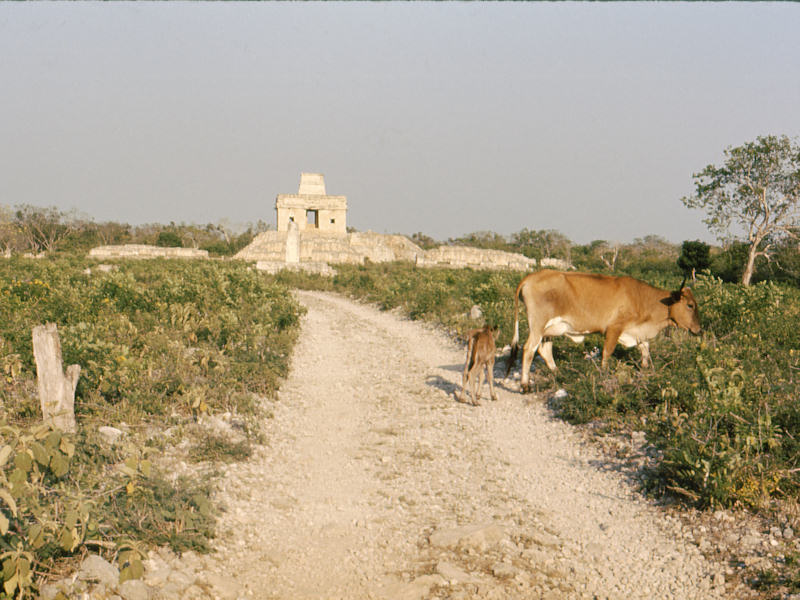 |
Dzibilchaltún, whose name means
"where there is writing on flat stones", is an ancient Mayan
city, situated approximately 17 kilometres north of Mérida. The
construction of Dzibilchaltún began around 600 B.C.. The city became the
main centre for salt trade. It was still inhabited at the time of the
Spanish conquest.
We are walking towards the principal monument of the site, on the long
sacbé(*) that connects it to the rest of the site.
(*) sacbé means white road because its stone paving was,
originally, coated with limestone stucco. |
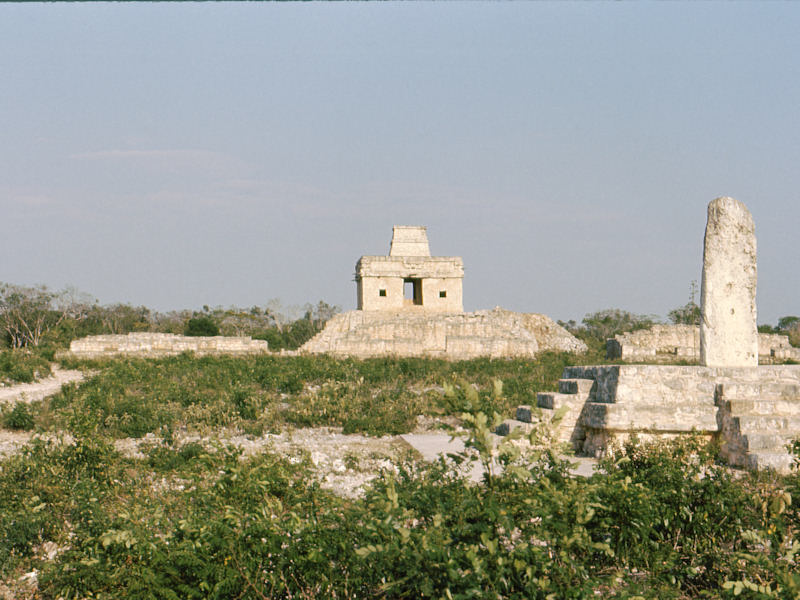 |
This structure is called the Temple
of the Seven Dolls, because of seven small effigies found at the site when
the temple was discovered under the ruins of a later temple pyramid, in
1950. The temple is square shaped and is built upon a pyramidal base. It
is east-west oriented and has two windows and a door on each side. The
base has stairs on each side. |
 |
This temple presents the
particularity of letting the light of the rising sun passes, twice a year,
through two opposite windows, at the moment of spring and autumn equinoxes.
This shows the great mathematical knowledge of the Maya. It is thought
this temple was used as an astronomical observatory. |
 |
Particular of one of the doors.
Several low relieves can also be seen inside the temple. |
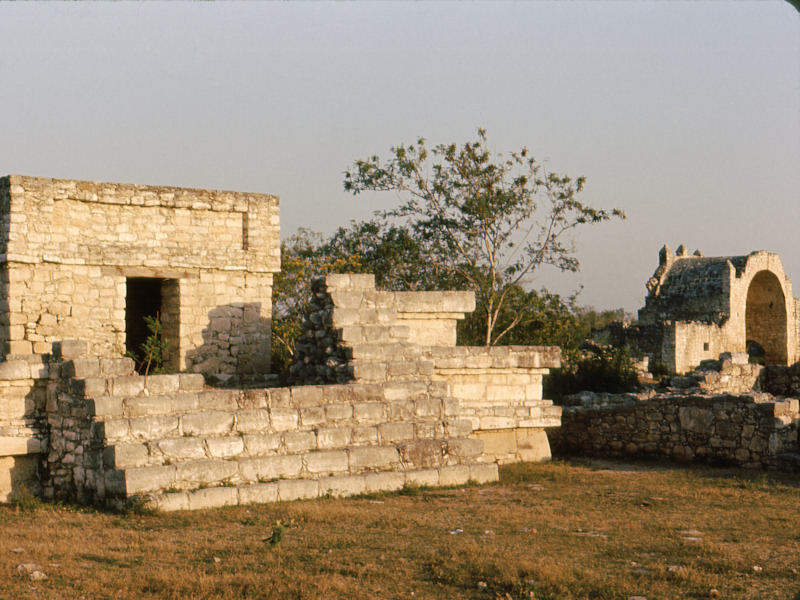 |
At the right of a small temple, the
ruins of a church built by the Spanish, around 1590, with stones retrieved
from the Mayan site. |
 |
This is the Cénote, or sacred well,
it is formed by an emergence of an underground river. Its very pure water
is 55 metres deep. People of the surrounding use the Cénote as a swimming
pool, to find some coolness. |
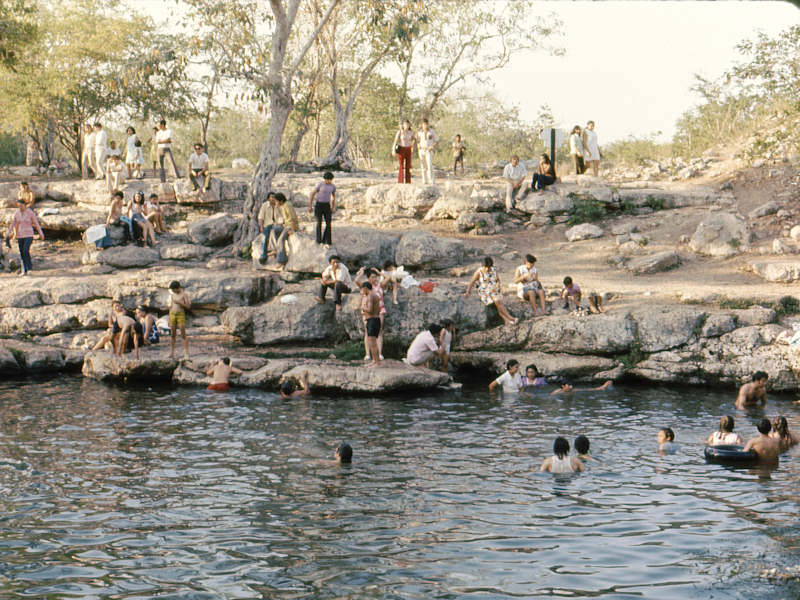 |
Divers found thousands of Mayan
artefacts at the bottom of the Cénote. They had been thrown inside the
well as offerings. These objects can now be seen, in the nearby museum. |
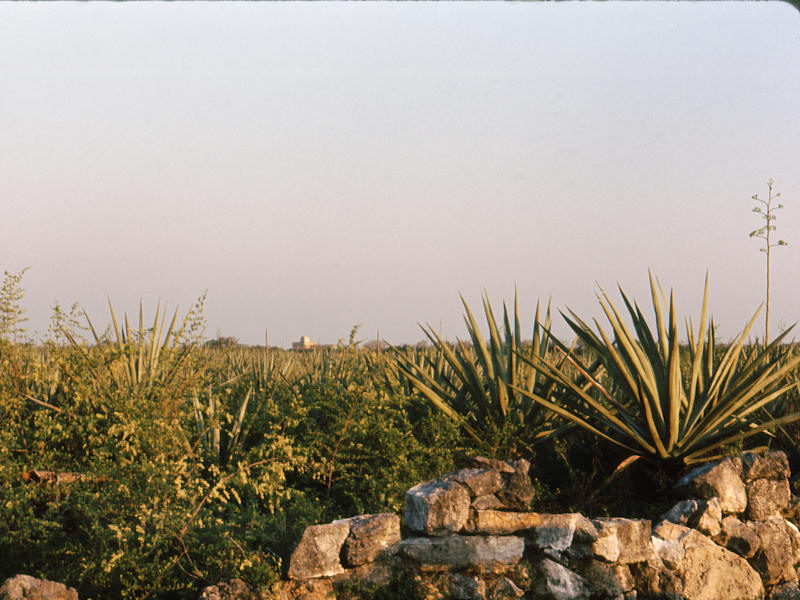 |
When we leave Dzibilchaltún, we
drive along henequen (an agave variety) fields, whose fibres are used to
make sacs and ropes and which were for a long period one of the main
resources of Yucatán.
Not to be mistaken for another agave variety, growing in the Mexican
region near the Pacific Ocean, whose distillation gives the tequila. |
Go
back
.
.
.
.
.
.
.



